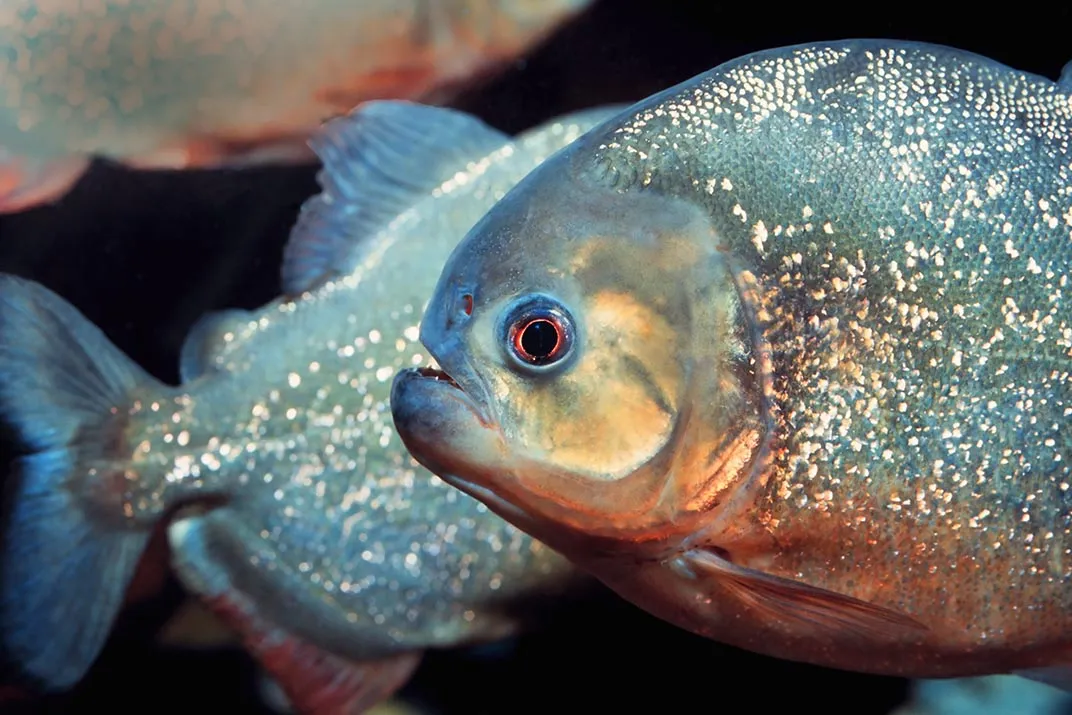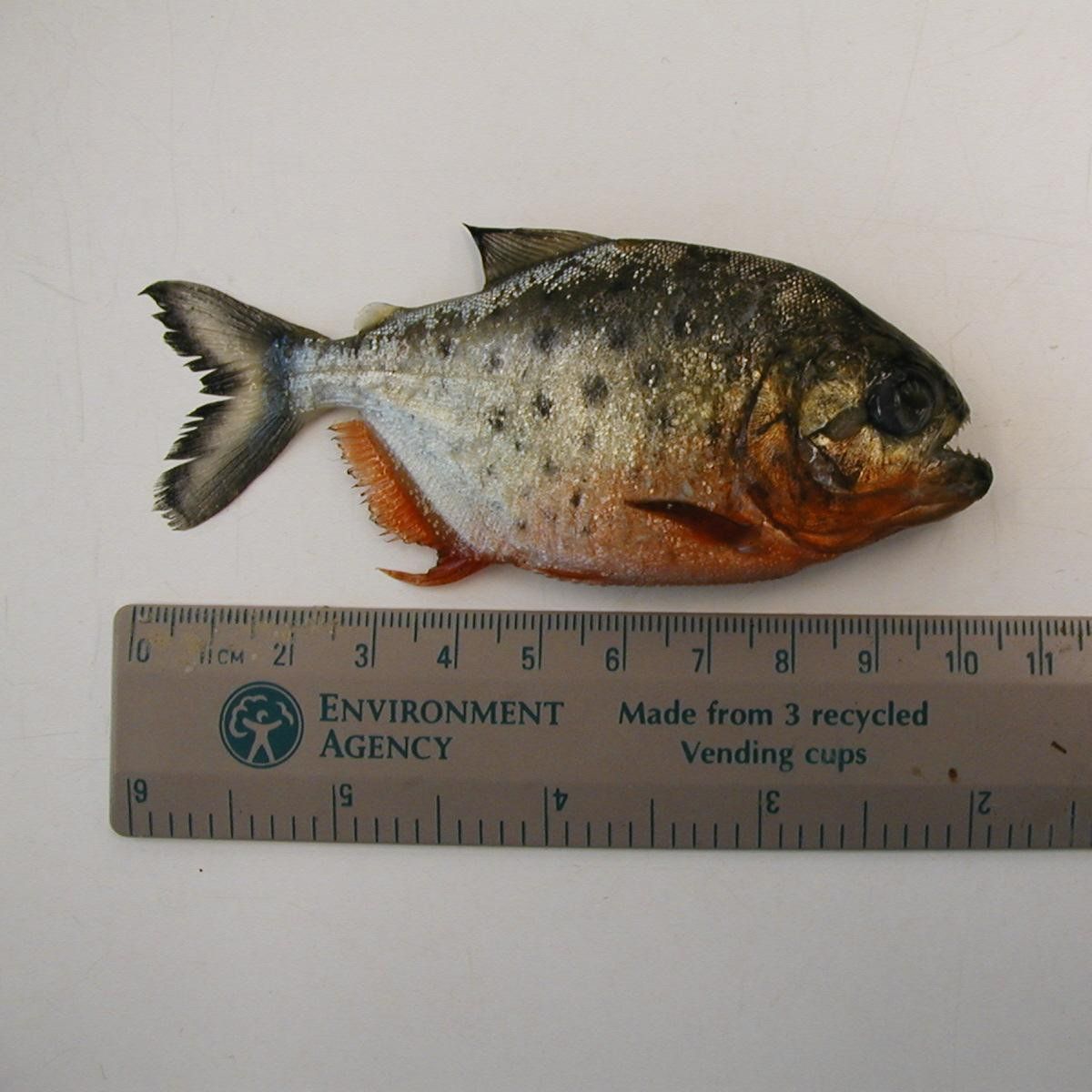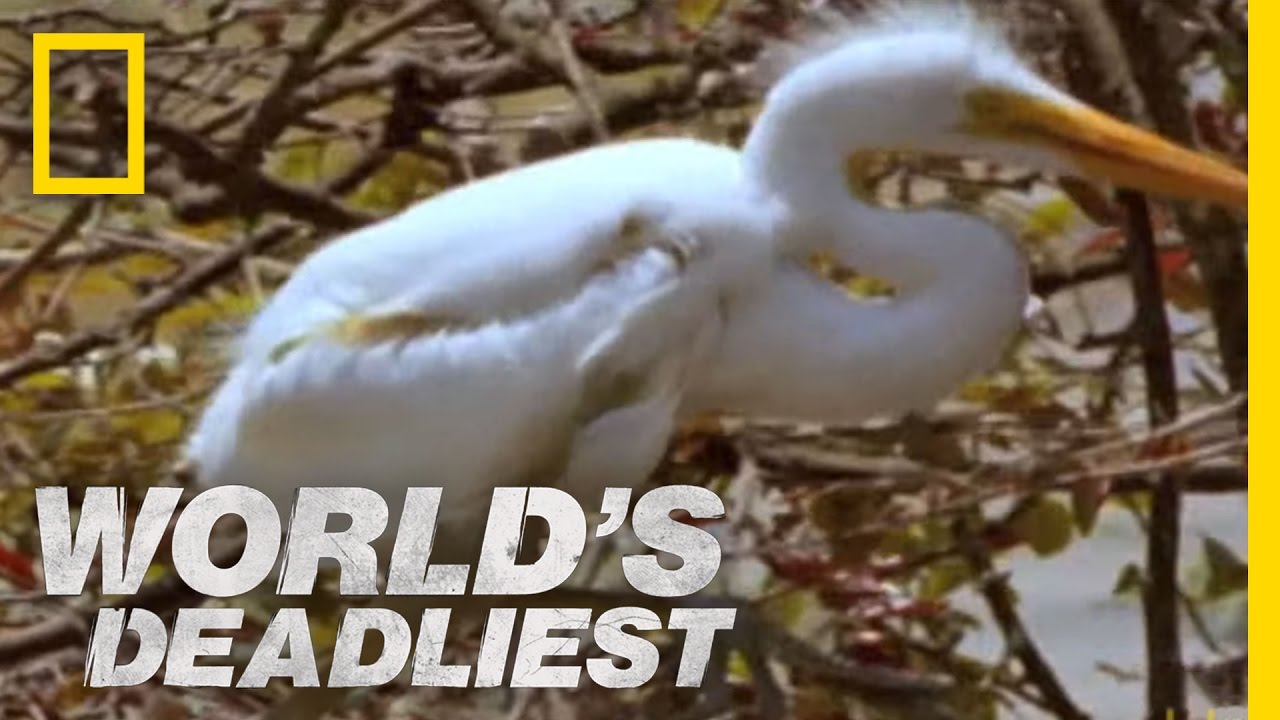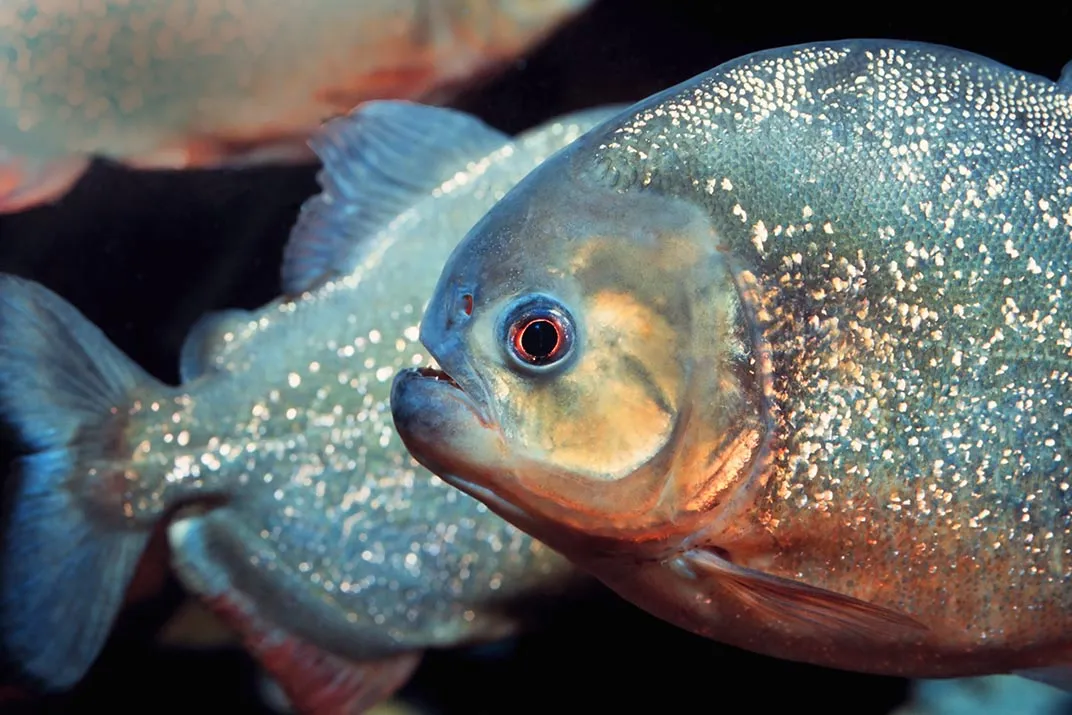Imagine yourself standing on the banks of a serene river in the heart of the Amazon rainforest. The sun is slowly setting, casting a warm golden glow over the lush vegetation. Just as you begin to immerse yourself in the tranquility of this natural paradise, a dramatic event unfolds before your eyes. A peaceful capybara, known for its large size and gentle nature, finds itself in a unsettling and unfortunate encounter with a school of ravenous piranhas, resulting in a heart-wrenching outcome. The harmony of nature suddenly shattered, as the capybara becomes the prey of these ferocious fish. It is a gripping tale that showcases the unpredictable and merciless reality of the animal kingdom.

Background
What is a Capybara?
A capybara is a fascinating creature and holds the title for being the largest rodent in the world. With their stocky bodies and friendly faces, they are often described as a mix between a large guinea pig and a beaver. Capybaras are semi-aquatic mammals that inhabit the lush grasslands and wetlands of South America. They have adapted to living both on land and in water, making them truly unique creatures.
What are Piranhas?
On the other side of the animal kingdom, we find the infamous piranhas. These carnivorous fish are known for their sharp teeth and aggressive feeding behaviors. Commonly found in the Amazon basin and other freshwater habitats in South America, piranhas have long held a reputation as ferocious predators. Their powerful jaw muscles and razor-sharp teeth make them formidable hunters, capable of quickly stripping the flesh from their prey.
Capybara: The Largest Rodent
Physical Characteristics
The capybara’s sheer size is undoubtedly one of its most distinguishing features. On average, an adult capybara can measure up to 1.2 meters in length and weigh around 50 to 60 kilograms. Their stocky bodies are built for a life in the water, with webbed feet and eyes and ears positioned on the top of their heads for efficient swimming. Their coarse, brown fur is well adapted to their watery environment and provides excellent insulation.
Natural Habitat
Capybaras are native to South America, where they predominantly inhabit the watery landscapes of the Amazon rainforest and the surrounding grasslands, marshes, and swamps. These social creatures are often found in large groups near bodies of water, such as rivers, lakes, and ponds. They use their semi-aquatic lifestyle to their advantage, cooling off in the water during the hot days and grazing on grasses and aquatic plants in the surrounding areas.
Behavior and Diet
Capybaras are highly social animals, living in groups known as herds, which can range from a few individuals to as many as 100 members. They have a friendly and peaceful disposition, often engaging in mutual grooming and play behaviors. Despite being herbivores, they are excellent swimmers and can dive underwater for several minutes to escape potential threats. Capybaras primarily feed on grasses, aquatic plants, and even tree bark, adjusting their diet depending on the availability of food in their environment.
Piranhas: Notorious Carnivorous Fish
Anatomy and Feeding Habits
Piranhas are built for hunting. With their muscular bodies and rows of sharp teeth, they strike fear into the hearts of many. Their powerful jaws pack a tremendous bite force, allowing them to tear through flesh and bone effortlessly. Unlike the common misconception, piranhas are not mindless killers. They primarily feed on small fish, insects, and occasionally carrion. Their incredible hunting skills lie in their ability to form large feeding frenzies, overpowering their prey in sheer numbers.
Habitat and Distribution
Piranhas are primarily found in the freshwater ecosystems of South America. They inhabit rivers, lakes, and flooded areas, taking advantage of the diverse and abundant prey available in these habitats. The Amazon River and its tributaries are particularly renowned for their piranha populations. Although piranhas are most commonly associated with Brazil, they can also be found in other countries such as Peru, Venezuela, and Colombia.
Interactions with Other Species
Piranhas play an essential role in their ecosystem, serving as a top predator and helping to control the population of smaller fish. They also provide a valuable food source for larger predatory fish, birds, and reptiles. Piranhas are known for their territorial behavior, fiercely defending their feeding and breeding grounds. Other fish species often have to adapt their behavior to coexist with these formidable predators.
The Tragic Encounter
Location and Time
The unfortunate encounter between a capybara and piranhas took place in the heart of the Amazon rainforest, a region teeming with life and natural wonder. This specific incident occurred in a remote area of Brazil, where both species coexist in an intricate web of predator-prey relationships. The incident happened during the peak of the dry season, when water levels in the rivers and swamps had significantly receded.
Circumstances Leading to the Attack
While capybaras are generally able to avoid most predators, especially in large herds, there are instances where they can become vulnerable. In this tragic encounter, it is believed that the capybara, for reasons unknown, strayed away from the safety of its herd and ventured into piranha territory. This ill-fated decision exposed the capybara to a heightened risk of predation.
Outcome of the Encounter
Regrettably, the outcome of this encounter was the capybara falling victim to the piranhas’ aggressive feeding frenzy. Due to the formidable hunting abilities and sharp teeth of the piranhas, the capybara had little chance of survival once it had been surrounded. This event serves as a reminder that even large and powerful animals can experience vulnerabilities, especially when faced with an unexpected and overwhelming threat.

Uncommon Predation
Instances of Capybara Predation by Piranhas
While capybaras generally lead a relatively safe existence within their social groups, encounters with piranhas resulting in predation are indeed rare. The capybara’s large size and aquatic abilities usually provide them with efficient defense mechanisms against most predators. However, in rare occurrences, such as the one described, capybaras can become victims of the razor-sharp teeth of piranhas.
Factors Leading to Unfortunate Encounters
Several factors may contribute to the occurrence of these tragic encounters between capybaras and piranhas. As mentioned previously, straying away from the safety of the herd significantly increases the risk of predation. Additionally, the changing dynamics of their ecosystem, such as alterations in water levels, food availability, and the behavior of other species, can create unforeseen circumstances that expose capybaras to the danger of piranha attacks.
Capybara-Piranha Relationship
Normal Interactions in the Ecosystem
Under normal circumstances, the relationship between capybaras and piranhas is relatively harmonious. Capybaras often graze on the vegetation near bodies of water, indirectly providing a food source for piranhas if any leftover plant material ends up in the water. Piranhas, in turn, help control the population of smaller fish and ensure a balanced ecosystem within their freshwater habitats.
Potential Impact on Capybara Populations
While instances of predation on capybaras by piranhas are infrequent, they can have a potential impact on capybara populations if they were to occur more frequently. Capybaras, as a keystone species, play a crucial role in the ecosystem by influencing vegetation growth and providing food for a wide range of predators. Any disruption in their population numbers could have cascading effects throughout the entire ecosystem.

Human Intervention
Conservation Efforts for Capybaras
Recognizing the importance of capybaras in maintaining the equilibrium of their habitats, conservation efforts have been underway to protect their populations. These efforts focus on preserving their natural habitats, implementing stricter regulations against hunting, and raising awareness about the significance of capybaras within the ecosystem. By actively engaging in conservation, we can ensure the long-term survival of these remarkable creatures.
Protective Measures Against Piranhas
While protecting capybaras remains a priority, there are currently no specific protective measures targeted exclusively at piranhas. Due to their integral role in the ecosystem, efforts are made to conserve the overall balance of their habitat, allowing predatory interactions to occur naturally. Recognizing the need for caution, humans are advised to avoid swimming in piranha-infested waters to minimize the risk of accidental encounters.
Other Predators of Capybaras
Natural Predators in the Animal Kingdom
Apart from piranhas, capybaras face potential threats from a variety of other predators. Jaguars, anacondas, caimans, and large birds of prey are just a few examples of the natural predators capybaras have to contend with. Each of these predators has its own unique hunting strategies to overcome the formidable defenses of capybaras. The struggle for survival in the animal kingdom is a constant battle, with capybaras as both prey and guardians of their ecosystem.
Comparing the Threat Level
When comparing the threat piranhas pose to capybaras with those of other predators, it becomes clear that piranhas are not necessarily the primary concern. While piranhas can indeed inflict serious damage, their specific hunting techniques and habitat preferences make their encounters with capybaras relatively rare. Other predators, such as jaguars and anacondas, pose a more immediate and direct threat to capybara populations, thereby warranting increased attention in conservation efforts.

Importance of Capybaras in the Ecosystem
Role as a Keystone Species
Capybaras play a critical role as a keystone species within their ecosystem. As herbivores, they serve as primary consumers, influencing the distribution and growth of vegetation through their grazing activities. The open spaces created by capybaras promote the growth of diverse plant species, providing habitats for numerous other animals. Their droppings also contribute to nutrient recycling, further enriching the ecosystem.
Ecological Impact of their Decline
The decline in capybara populations would have severe ecological consequences. The loss of capybaras would disrupt the fine balance between vegetation and herbivore populations, leading to overgrowth of vegetation in some areas and habitat degradation in others. Additionally, the reduction in capybaras as prey would affect the populations of their predators, cascading downward through the food chain and potentially destabilizing the entire ecosystem.
Conclusion
The Capybara-Piranha Interaction: A Rare Occurrence
Although the unfortunate encounter between a capybara and piranhas resulting in predation is a tragic event, it is important to note that such interactions are exceedingly rare. Capybaras are incredibly adaptable creatures and have developed various defenses to minimize their vulnerability to predation. While piranhas are formidable hunters, their feeding habits and habitat preferences make their encounters with capybaras less common than encounters with other predators.
Conservation and Education for Coexistence
The conservation of capybaras and the preservation of their natural habitats remain paramount. By understanding the intricate relationships between capybaras, piranhas, and other species within the ecosystem, we can work towards implementing effective conservation strategies. Education and awareness initiatives can further enhance our understanding of these fascinating creatures and foster a sense of responsibility in coexisting with them. Through these efforts, we can ensure the long-term survival of capybaras and the continued harmony of their unique ecosystem.



